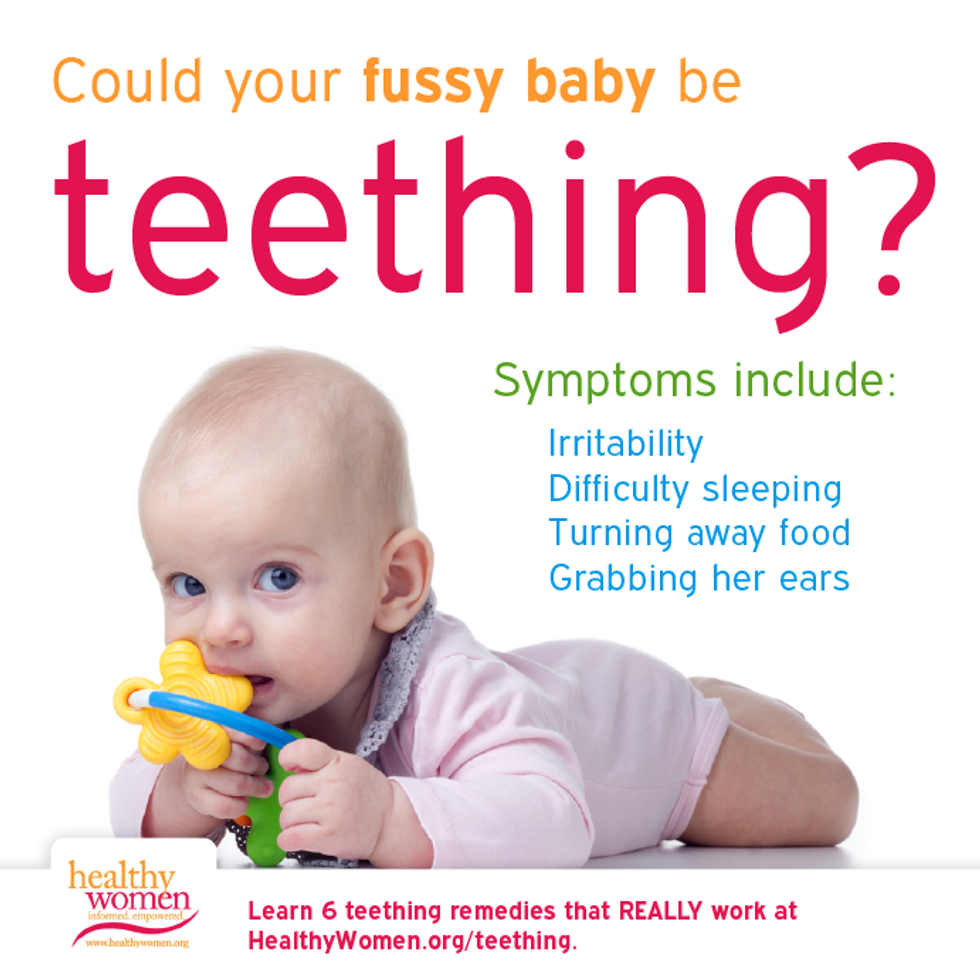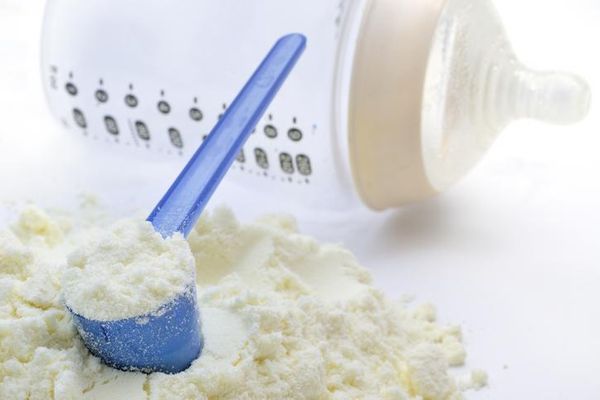Many new parents dread the thought of their children teething—not only is it painful for the baby, but it's pretty rough on you, too! Sore gums can keep both of you up at night, and there's nothing fun about drooling, crankiness and crying during the day.
Children generally start teething around 6 months old, but some babies' teeth start growing in earlier or later. The smaller front teeth might not be very painful, but when the molars start growing in when your child is around 10 to 15 months old, teething discomfort might be more noticeable. Many kids have their first set of full teeth by the time they're 3.
To cut down on how painful teething is, here are six teething relief methods to try.

When your baby's first teeth are coming in, one of your clean fingers is enough to offer relief, either by letting your child "chew" on it or by using it to rub his or her gums. The counterpressure of your finger can relieve the ache of the new teeth pushing up out of the gums.
2. Let your baby chew.
Another counterpressure option is to let your child chew on something—preferably something really cold, which can help numb the gums. Rubber teething rings with bumps and other teething toys that you can stick in the fridge or freezer work well. (Be careful with gel- or liquid-filled teethers; they can be too cold for your baby's mouth if you freeze them.) You can also use a clean, frozen wet washcloth. Tie a knot in the end of the washcloth before freezing for more teething relief.
3. Rely on foods.
Chewing on foods, especially cold ones, is another great way to offer soothing counterpressure. Try giving your baby frozen fruits placed in a mesh feeder bag (under your supervision). Or, offer something large and chilled that he or she can gnaw on, like a big dill pickle or carrot. Chilled food like yogurt or applesauce can work too.
4. Offer a cold drink.
Even something as simple as a cold drink can offer relief. A bottle of ice water is a simple go-to, but older babies could drink ice-free water or juice in a cup.
5. Try an over-the-counter remedy.
Sometimes OTC medicines can help if your baby is particularly cranky. Baby acetaminophen (like Tylenol) or ibuprofen (like Advil or Motrin) might help. Check with your child's health care provider before administering these medicines, and be sure to follow dosage directions carefully. If your child is 2 years or older, you may try a topical numbing agent or pain reliever (like Orajel). The U.S. Food and Drug Administration warns against using products containing local anesthetics in infants and young children. This includes the OTC numbing agents, as well as prescription drugs such as viscous lidocaine.
6. Use a homeopathic treatment.
If you're not ready to try OTC medicines, ask your child's health care provider about homeopathic remedies. Things like melt-away teething tablets, chamomilla (like Camilia) or aconite drops can help reduce swelling and relieve irritability. Rubbing a slice of peeled ginger on your baby's gums can be soothing, too. You can also try mixing ground cloves or allspice with water to form a paste to put on the gums, or use clove oil or natural vanilla or almond extracts applied to your baby's gums with a cotton swab.







